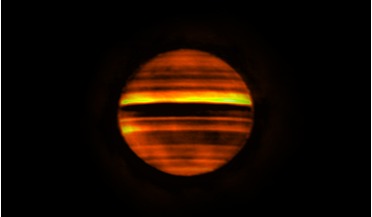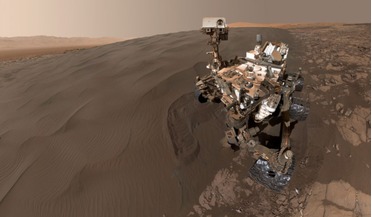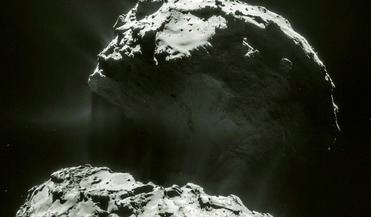 04 April 2016
Astronomers have for the first time found gas-phase ammonia in a protoplanetary disc
04 April 2016
Astronomers have for the first time found gas-phase ammonia in a protoplanetary disc
...comparison H2O, the team find that the ammonia emission corresponds to an ammonia vapour mass that ranges from 7.0 x ... x 1022 g – masses that are much smaller than the potential ammonia ice reservoir of > 3.0 x 1028 g. Schematic illustration of the...
 23 August 2019
Energetic eruption helps astronomers peer deep within Jupiter's atmosphere
23 August 2019
Energetic eruption helps astronomers peer deep within Jupiter's atmosphere
... plume with ALMA. What they found, is that below the top-most ammonia ice cloud layer, is a layer of solid ammonia hydrosulfide particles. Ammonia hydrosulfide on Earth is a combustible material that when applied in a solution can be used to colour...
 01 November 2021
Curiosity finds organic molecules in Mars sand dune
01 November 2021
Curiosity finds organic molecules in Mars sand dune
... a number of organic molecules including benzoic acid, ammonia, phosphoric acid, phenol and several nitrogen-bearing molecules... Along with chemically derivatised benzoic acid and ammonia, spectral signatures matching derivatised phosphoric acid and ...
 June 2019
Does the speed of light change with time?
June 2019
Does the speed of light change with time?
... old clock. In space, an atomic clock - one which is regulated by the vibrations of an atomic or molecular system such as caesium or ammonia - may be more accurate than a clock on Earth because our planet’s gravity will not interfere with the...
 October 2017
Cassini observations open up Saturn’s atmosphere
October 2017
Cassini observations open up Saturn’s atmosphere
... commonly found in the solar system: methane, water, ammonia, and hydrogen sulphide. Some of these species are volatile... followed by a compound called ammonium hydrosulphide, and then ammonia ice at the topmost levels. When banded structures, swirling...
 January 2020
Small body missions unveil interplanetary secrets
January 2020
Small body missions unveil interplanetary secrets
... it is composed largely of frozen volatiles, such as methane, ammonia and water. KBOs like Ultima Thule are the building blocks ...it has significant amounts of ices and volatiles such as ammonia. These observations suggest that it must have been formed...